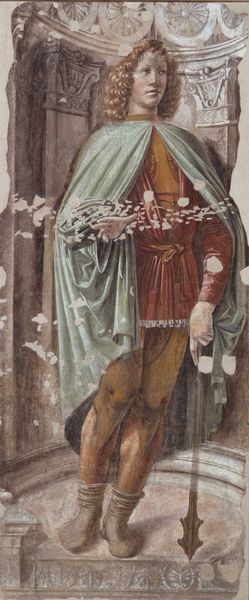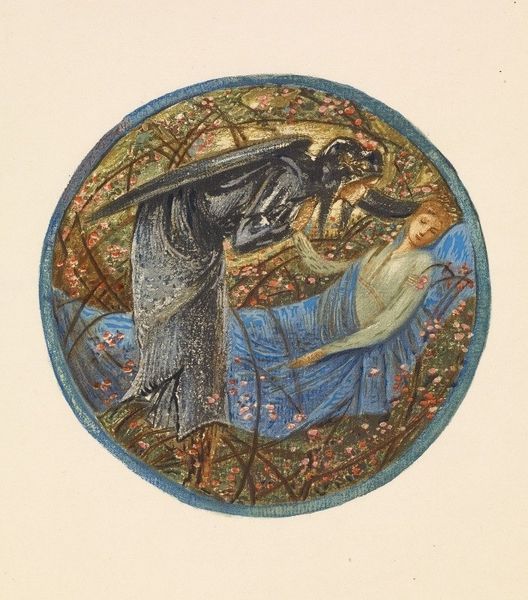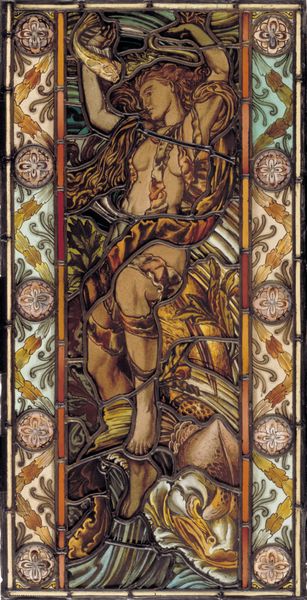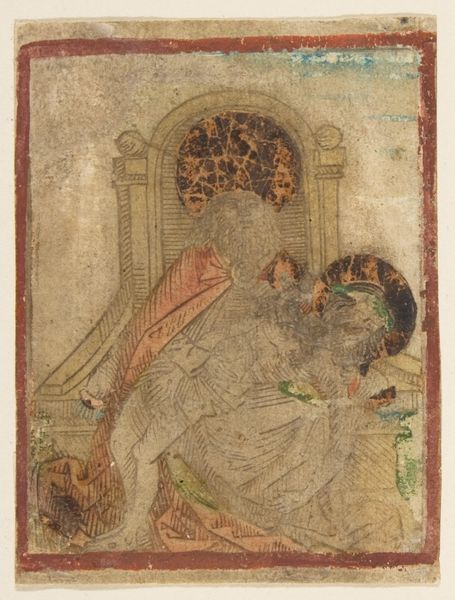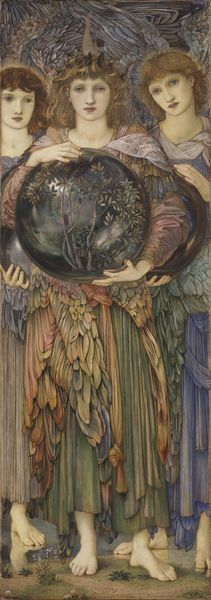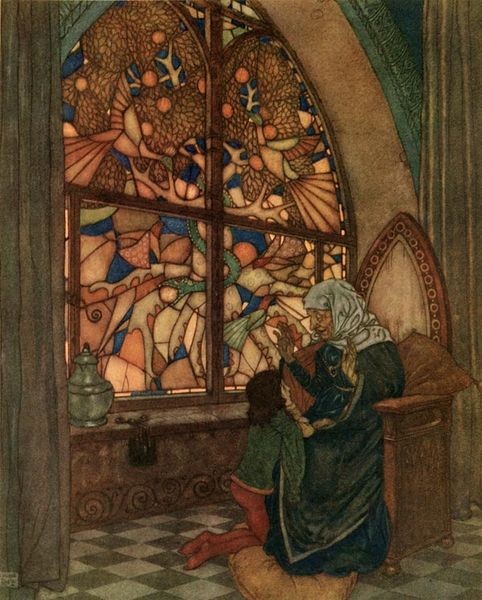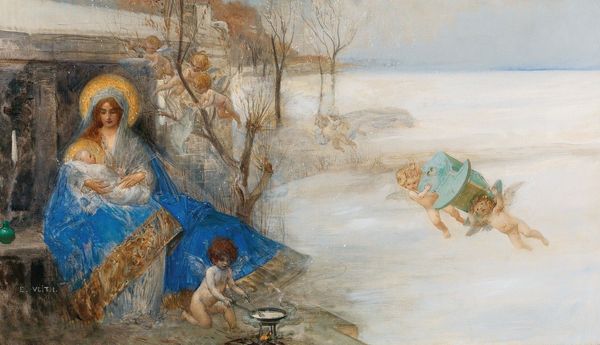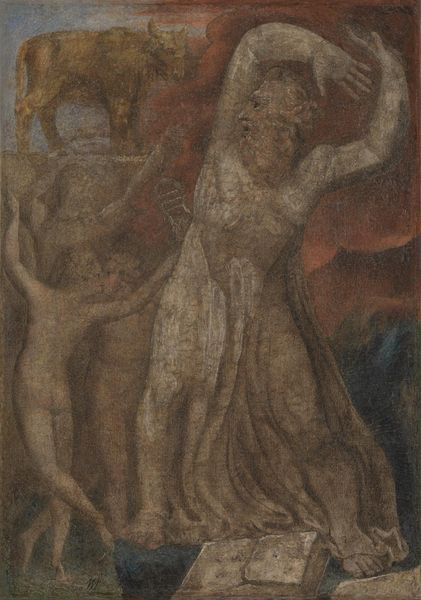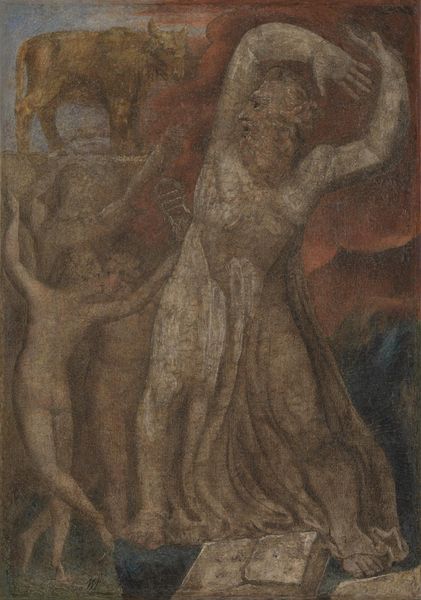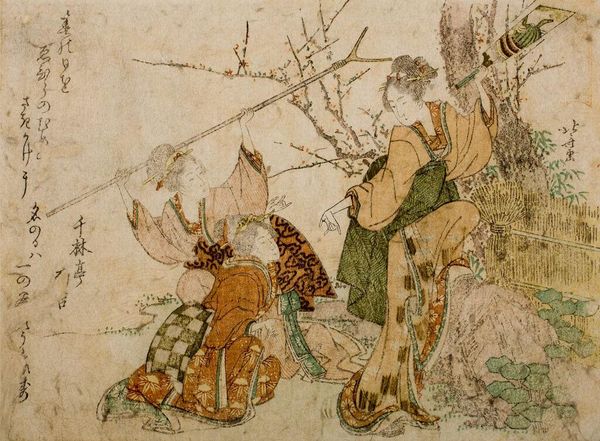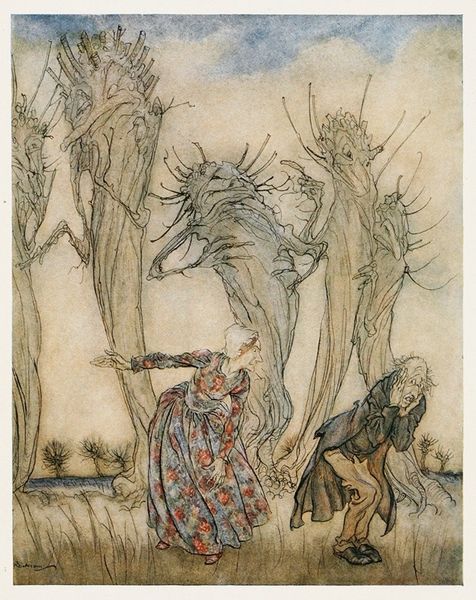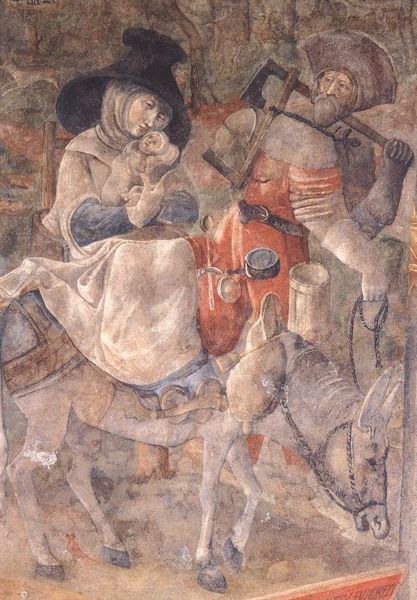
drawing, mixed-media, coloured-pencil
#
drawing
#
mixed-media
#
coloured-pencil
#
narrative-art
#
landscape
#
figuration
#
coloured pencil
#
mythology
#
pre-raphaelites
#
mixed medium
#
mixed media
Copyright: Public Domain: Artvee
Curator: What strikes me first about this work, "Theseus and the Minotaur in the Labyrinth," dated 1861, by Edward Burne-Jones, is the vulnerability it projects, even amid the supposed heroism. It's all mixed media, drawing, colored pencils, somehow amplifying that tentative feeling. Editor: Absolutely. There’s something incredibly immediate and haunting about its rawness. Burne-Jones understood the weight of these archetypal stories. I see the Minotaur as an emblem of the shadow self, peering from that abyss of the labyrinth. It’s more scared child than beast, somehow. Curator: It's interesting that you pick up on fear rather than aggression. His vulnerability gives the minotaur a depth I usually overlook. He's usually a pure symbol of rage and terror. Looking at it again, even the way Theseus is rendered – all elongated limbs and unsure gaze. His bravado seems like a paper shield against what lies within the maze. Editor: I think it highlights that this hero’s journey is a confrontation with himself, represented by his darker impulses, so aptly caged and simultaneously set free in this labyrinthine structure. Even those tiny little bones strewn about feel significant. Death, decay, what we bury deep inside ourselves. And notice, too, the flowers are springing from the blood soaked soil. Curator: And how the rigid architecture of the labyrinth, that symbolic prison of the mind, seems so brittle, rendered with coloured pencil. He is up against his fears! I was expecting a muscular, powerful presentation of the well-known tale and he has given us something human and subtle. I hadn’t really stopped to think before about Theseus and his demons, now he feels accessible in his fear. Editor: Perhaps Burne-Jones suggests the Minotaur isn’t some monstrous 'other' to be slain, but a part of us that must be acknowledged to make ourselves whole. He has trapped the monster in us but until Theseus comes face to face, in recognition, can it truly die, leaving behind that flowering. It almost urges empathy. Curator: Well, now, after looking through your eyes, I am utterly changed. That’s the kind of image I want to spend a lifetime with, still uncovering hidden corners. Editor: Me too. There are myths that stay with us because they resonate through time, each one changing us slightly along the way.
Comments
No comments
Be the first to comment and join the conversation on the ultimate creative platform.
